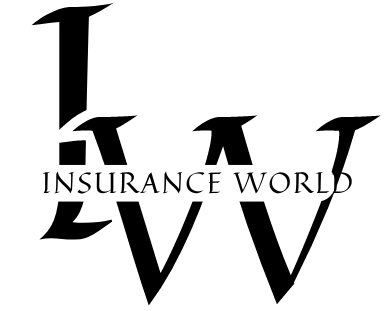Introduction:
Earthquake insurance is a specialized form of insurance coverage designed to protect homeowners, renters, and businesses against the devastating financial losses caused by earthquakes. While earthquakes are relatively rare compared to other natural disasters, they can cause significant damage to buildings, infrastructure, and personal property, resulting in costly repairs, rebuilding expenses, and loss of income. In this comprehensive guide, we’ll explore everything you need to know about earthquake insurance, from understanding its importance to navigating coverage options and risk management strategies to prepare for seismic events.
- Understanding Earthquake Insurance:
- Earthquake insurance is a type of insurance coverage that provides financial protection against losses or damages resulting from earthquakes, including structural damage to buildings, personal property damage, and additional living expenses.
- It covers repair or replacement costs for damage to the insured property caused by ground shaking, ground displacement, landslides, and other seismic events associated with earthquakes.
- Earthquake insurance policies can vary in terms of coverage options, deductibles, and exclusions, allowing policyholders to tailor their coverage to their specific needs and risk exposures.
- Importance of Earthquake Insurance:
- Financial Protection: Earthquake insurance provides essential financial protection for homeowners, renters, and businesses against the potentially catastrophic costs of repairing or rebuilding property damaged by earthquakes.
- Coverage Gap: Standard homeowners, renters, and commercial property insurance policies typically do not cover earthquake damage, leaving policyholders vulnerable to significant financial losses in the event of an earthquake without separate earthquake insurance coverage.
- Peace of Mind: Earthquake insurance offers peace of mind and security for property owners and renters, knowing that they are financially protected against the risks of earthquake damage and can recover quickly from the aftermath of a seismic event.
- Coverage Provided by Earthquake Insurance: a. Dwelling Coverage:
- Dwelling coverage provides protection for the structural components of the insured property, including the building’s foundation, walls, roof, and attached structures, against earthquake damage.It covers repair or replacement costs for structural damage caused by ground shaking, ground displacement, or other seismic events associated with earthquakes.
- Personal property coverage provides protection for personal belongings, furnishings, appliances, electronics, and other contents inside the insured property against earthquake damage.It covers repair or replacement costs for personal property damaged or destroyed by earthquake-related events, such as ground shaking, building collapse, or falling debris.
- Additional living expenses coverage reimburses policyholders for temporary living expenses incurred while their home is uninhabitable due to earthquake damage, such as hotel stays, rental accommodations, and meals.It ensures that policyholders can maintain their standard of living and cover necessary expenses during the period of displacement or home repairs following an earthquake.
- Loss of rental income coverage provides protection for landlords or property owners who rely on rental income from investment properties affected by earthquake damage.
- It reimburses landlords for lost rental income during the period of property repairs or reconstruction, ensuring financial stability and continuity of rental income flow.
- Factors Affecting Earthquake Insurance Premiums:
- Location: The geographic location of the insured property, including its proximity to known seismic zones, fault lines, or areas with a history of earthquakes, can impact earthquake insurance premiums.
- Property Value: The value of the insured property, including the replacement cost or actual cash value of the building and contents, can influence earthquake insurance premiums, with higher rates for more valuable properties.
- Building Construction: The type of construction materials used in the building, including the age, condition, and structural integrity of the property, may affect earthquake insurance premiums.
- Deductibles and Coverage Limits: The deductible amount and coverage limits selected by the policyholder can impact earthquake insurance premiums, with higher deductibles and lower coverage limits resulting in lower premiums.
- Selecting the Right Earthquake Insurance Coverage:
- Assess Risk Exposure: Evaluate the specific risks and exposures associated with earthquakes, including factors such as geographic location, building construction, and property value, to determine the appropriate coverage needs.
- Review Policy Options: Research and compare earthquake insurance policies from multiple insurers, reviewing coverage options, deductibles, premiums, and policy terms to find the best fit for your property and budget.
- Customize Coverage: Tailor your earthquake insurance coverage to meet your unique needs and risk tolerance, considering factors such as coverage limits, deductibles, and additional endorsements or riders for specific coverage enhancements.
- Consider Bundling Options: Explore bundling options with your existing homeowners, renters, or commercial property insurance policies to potentially qualify for discounts or reduced premiums on earthquake insurance coverage.
- Risk Management Strategies for Earthquake Preparedness:
- Retrofitting and Structural Upgrades: Invest in retrofitting and structural upgrades to strengthen the building’s resilience against earthquake damage, including reinforcing foundation, walls, and structural elements.
- Secure Heavy Objects: Secure heavy furniture, appliances, and fixtures to walls or floors using anchors, straps, or braces to prevent them from tipping over or causing injury or damage during an earthquake.
- Emergency Preparedness Planning: Develop and implement an emergency preparedness plan for earthquake events, including evacuation routes, emergency supplies, communication protocols, and family or staff training.
- Earthquake Insurance Review: Regularly review and update your earthquake insurance coverage to ensure that it adequately reflects changes in property value, occupancy, construction, or risk exposure over time.
Conclusion:
Earthquake insurance is a critical component of disaster preparedness and financial protection for homeowners, renters, and businesses located in earthquake-prone regions. By understanding the importance of earthquake insurance, selecting the right coverage options, and implementing effective risk management strategies, property owners and renters can safeguard their homes, belongings, and financial security against the unpredictable risks of earthquakes. With comprehensive earthquake insurance coverage in place, individuals and businesses can face seismic events with confidence and resilience, knowing that they are financially protected and prepared to recover from the aftermath of an earthquake.

